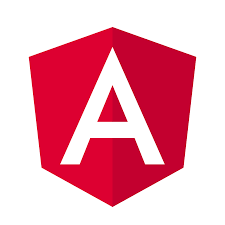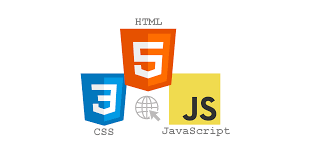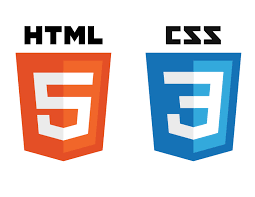
Himesh Aadeshara
- Role
Senior Frontend Developer
- Years of Experience
9 years
Skillsets
- CSS
- Git
- Less
- Kanban
- On
- Node
- Eclipse
- Bootstrap
- HTML
- Analytical
- Rest APIs
- APIS
- CRM
- Visual Studio
- automation
- cross-browser
- React Js
- QA
- Agile development
- Troubleshooting
- Angular Material
- SCSS
- UI
- NPM
- JavaScript - 8.0 Years
- JSON
- Jira
- Scrum
- Type Script - 5.0 Years
- Node Js - 3 Years
- Node Js - 3 Years
- Angular - 4 Years
- Angular - 4 Years
- Design
- Sass
- Database
- jQuery
- Meta
- JS
- react
- Type Script - 5 Years
- version control
- Angular Js
- AJAX
- Communication
- Debugging
- C
- cross
- HTML5
- Agile
- SVN
- Cloud
- CSS3
Vetted For
- Roles & Skills
- Results
- Details
- Senior Front End Angular DeveloperAI Screening
- 50%
- Skills assessed :NgRx, NGXS, Angular, HTML / CSS, Jenkins, React Js
- Score: 50/100
Professional Summary
- Dec, 2014 - Present10 yr 10 months
Software Engineer II
Asite Solutions
Applications & Tools Known

Angular

TypeScript

Javascript

HTML, CSS and JavaScript

HTML/CSS

jQuery
Node.js
Work History
Software Engineer II
Asite Solutions- Led a team of junior developers in project work.
- Develop front-end interfaces using HTML5, CSS3, and JavaScript with Angular.js and Angular 2+.
- Ensure cross-browser compatibility through robust and reusable code.
- Communicate with various teams for requirements and integrate server-side code and third-party data with the UI.
- Collaborate with the production team to optimize user experiences.
- Troubleshoot issues reported by QA and clients.
- Mentor new team members and communicate with other teams regarding plugin and product usage.
Major Projects
Adoddle and Collab
- Its core product which includes many modules like dashboard having charts, projects, document publishing, downloading, file view and many more deep modules, as well as utility components which is created for custom use.
aSync Desktop application
Asite Solutions- ASync is a desktop application (currently in Beta mode) which enables you to edit your files stored on Asite Cloud (using supported native application as applicable) and publish a new revision, depending on your access.
- It enables you to open files from Asite web application, which can then be edited using the native applications you may have available in your desktop/laptop. Every time you edit and save the changes using the native application, you have an option to publish the changes as a new file revision directly on the cloud.
- In development we achieved two sync in this application where any cloud upload gets documents in local and any Local document created in local updates cloud.
aDrive Web application (8 months)
Application is kind of the document storage by creating structure wise.
Providing facility like filters and hierarchical level of the folder structures.
Support for file viewing using viewers online
Bid winner Web application (1.5 years)
- Application is like an estimator which is used to create estimate of the inventories which are highlighted or inserted.
App Forms (Multiple Projects same technologies with different Business Logics) (2.5 years)
Multiple projects based on different requirements by consultants.
Workflow Manager
Workflow is a tool for the automation of business processes. It includes defining a flow and its execution on document and forms.
In a visual workflow, tasks, information and documents/forms are passed from one participant to another for action, according to a set of pre-defined rules
Education
Bachelor of Engineering (B.E.), Computer Engineering
Universal College of engineering and technology (2023)Diploma, Computer Engineering
Government Polytechnic (2023)
Certifications
Meta Front-End Developer
AI-interview Questions & Answers
Hi. I'm David, uh, working as a software engineer too. I started my journey as a junior developer with Inside Solutions. I'm currently working with it. I have the 8.5 years, Uh, plus years of experience in this company. I have worked as a front end developer. I have worked as a UI developer role as well. As per my role, current role, I'm having monitoring the 4 Julia developers as well working Working with, uh, like, uh, PA teams, uh, requirement that during QA as well. So yeah. Uh, as far as, uh, technology stack, I have worked with HTML, JavaScript, jQuery, CSS, uh, EXCJS for 3, 4 months, then AngularJS. And, literally, as per, like, latest trend, I'm working with Angular, uh, TypeScript. Uh, also, as my latest project, it's, Then build on, uh, electron JS framework, which is the build on, uh, node JS. So in this project, we are communicating with the desktop, application 2, uh, cloud, uh, o one cloud. So communicating with those things with the batch of this, Then, like, uh, we are storing local database in, like, local data in a database file in local machine. So, yeah, in that, uh, we are using Angular as a front end part. Uh, we are handling f s modules back end. And, yeah, the The the application is for desktop application.
How would you manage We have an for back end. So, yeah, uh, in that, like, uh, we are having a, uh, we are having a application, uh, back end application communicate by using environment? Yes. Yes. So in that, uh, we are we are we are giving the both and URLs and and those things, uh, with her, uh, with staging staging case, like, if we have a staging? If we have a staging if we have a, like, a staging environment, uh, production development, local development, and environment. So all these are, uh, like, uh, we can, make it communicate with, uh, that configuration file with the back end team? Like, back end team also have some specific, uh, server running ports and then URLs? So yeah. We can do it that way.
What process would you follow to perform code reviews and unit testing in Angular dialogue? Yeah. So, uh, we have done like, uh, that is a unique test case of, uh, build dot? Kava JS Karma. So in Angular, we are doing that Karma is the, like, uh, unit test is compiler. Uh, here we what the test cases. And for the process of code reviews, yeah, there are, like, uh, extensions here, GS links, TS links are there, which actually, uh, creates, like, uh, which, uh, notifies us of error while compiling time. So in that way, we are performing the, uh, syntax level, uh, code reviews. And then after, like, uh, we we can manually, code reviews as well, uh, by the before merging the PR, uh, which can be done by, like, uh, any lead or reviewer That can be any role, uh, to whom
So, uh, here, like, uh, the issues, uh, we cannot say. Like, we can have a opportunity of performing, uh, performance optimization for the core. Like, call quality can be measured here. So, like, uh, if you want to if you if you can, uh, if uh, health conditions, we can manage it, then we should do it that way. Also, most of the, uh, issues are, like, uh, when you're trying to get the probability of any object, um, but the object is null, then that that that can be the possibility where the JavaScript uh, uh, files and error and I mean, throws an error and stops executing. So those kind of errors are, like, uh, where, uh, also, there are many plenty of conditions where where, like, uh, when we when we fetch data from this server, we are not handling any, uh, error part, like, we are handling the success part. So, uh, most of the things, uh, we have uh, I mean, I have encountered, like, few reviews. Also, like, a functional reviews can be there. Like, uh, there would be a functional flow if, uh, uh, telepories uh, it's sound with the functionality. So he can he she can, like, get the uh, idea about flow that, uh, there might be possibility that it throws an error. It it will not work.
So for the performance optimization, uh, we should, uh, reduce CSS parts, like, the as less paint for the HTML dome. Uh, it will help to optimize, uh, and we should not make dome very heavy. Like, Angular is, uh, providing though there are many it is where we we put NGP conditions where, uh, we are not needed anything. So, uh, I mean, need need not needed to show that Dior information. Uh, it will remove the dome. So that is, uh, helpful, the angular optimization. Also, there is a thing, like, uh, there are 2 optimization while building the app. Uh, Angular app is having, uh, 2 facilities where, uh, is that where we have 2, uh, IoT is, like, uh, where where we we we we, uh, bundle the whole process at the build time and just deploy those things, and render the, uh, render the page. And, also, there is a there is a, like, way that all traditional way where we were, uh, it is, uh, it is it is it it is compiling at the browser level, and then it gets, uh, render. So it takes time at that moment. So Angular has provided the bundle bundle from study while creating the build time. It enhances the, uh, thing. Also, there is a thing, like, uh, when we not needed any components, uh, so we should load it in, uh, lazy loading manner. So lazy loading is also there, uh, come, uh, like, a feature where we we we need to only do those things. Also, tree shaking, uh, concept is there, which is, like, what you'll be
So, uh, for the code usability, like, there are, uh, plugins for, like, a Kafka, like, that I don't know the exact name, uh, uh, where we can mention, like, a back end team mentions the, uh, the APIs and, uh, for that, uh, we can, uh, we can reuse the APIs. Also component is there, like, uh, where uh, so most probably, uh, here here the main case is like, uh, we need don't need to, uh, like, uh, do this specific code, like, ID based code or or, like, uh, parameters, uh, we can, like, we can make it parameterized, uh, like, uh, we we have to we have to do it by, uh, giving the parameters and do it work uh, as stand alone, like, as a as a standard code practice, uh, the 1 1 function, uh, work with like, 1 function works uh, the only 1 task, uh, single function is, uh, suppose I have to add something, so that function should, must work as a, like, addition only. It should not, uh, do any other things. So stick with the those concept standard. And that way, we are, like, having, uh, achieve the core usability, uh, with Angular or React, any any framework. Like, it's not about Angular and React. Uh, you can, uh, you can have any framework
Consider this angular core block. Uh, can you explain how it, uh, core works, especially role of the engine method in the component life cycle. So so so, like, uh, here component is, like, a added component is a separator, uh, which have the selector name like approved. So here here main main, uh, your app starts with the like, this component is start with the, uh, app root, uh, like, element where wherever, uh, in application, it has been put. So here in that, uh, there is a template is blank. Like, uh, it is the root. So it it says that it is the root component. Uh, then there is a style URLs, uh, handling with the app, component s c s CSS file. So, yeah, this component has specific file, which is known as app dot component CSS. Uh, this component is basically, uh, working as a root. Uh, also, the the class, like, uh, here is Export export class app component. The problem, uh, would be here is, uh, there is a n g on init event is here, but, uh, the class is not implementing that, uh, on init method, uh, on init class. So you have to first, like, uh, engine on init, On in it in the, uh, you'd we must have to we must have to import, Import the, uh, on it from the angle code, then after we can use it. Uh, as, uh, it it it it will give the error, like, uh, it is not, uh, have the method. So, uh, as a component's life cycle, uh, the the components of first ever, uh, function is First, ever execution will start with the constructor, uh, but your constructor is not present. So, uh, then after the life cycle is, Um, the engine on unit method, whenever whenever, uh, your component gets loaded loaded and, uh, ready to work with, Like, the the 1st, uh, life cycle method will be called, uh, like, NG on change. And, uh, NG change, I I guess, is that change detected or Something is like that. Uh, then after engine on end is there, uh, which is having the first method, whichever call after the component gets started. So then after other life cycles are there, uh, that app n g after viewing it and f g after content check, n g f, Uh, content check, content, uh, in it, uh, view change, view in it, and and it destroy is also there. So there are 7 or 8 life cycle aside there. So and also the, like, uh, main role of the engine it is. They, uh, whenever, uh, we have to put any components Initially, like, uh, if we have to get some data on load, like, uh, loading that component or, uh, on this, uh, on the Just viewing the screen of that component. So we can put it those calls, several calls, or values are, uh, we can put that. So as like the in document dot ready function for the There is no HTML. Uh, it is same kind of thing for the component label, like, not for the whole page. It it is the, uh, same kind of manner for the Component
This code snippet has a problem that can lead to memory leaks. Can you identify the problem and suggest the solutions? So, uh, here, the memory leaks are like, uh, when we are subscribing it, we are not this, uh, unsubscribe unsubscribing it as a as a as a uh, destroy component. Also, there is, uh, also there is a thing like, uh, here. So memory leak is there, like, uh, when we when we have binded already, uh, the component, uh, like, group, uh, form, uh, form to the group. Uh, the each element is having the, uh, curve form, like, uh, bind binded with the input or or elements. So the, uh, the main thing is, like, why why we need to, uh, subscribe it to the value challenges. Uh, we should, Put that, like, uh, on the submit, we can check the form. So that way, uh, take, There can be the solution where like, we have to just check the, all values, and validate those ones to the submit
Describe circumstances of our transition from angular As of now, like, I don't have transition from Angular to React JS Or vice versa, but though, uh, do I have, uh, transist from from AngularJS to Angular? That was also, like, drastic change where, The the the whole pattern, uh, like, have changed, uh, that is a controller based form, like, according to the component based coding. So that that was the huge huge change for that That, uh, the lesson I have learned from and the as per my knowledge, like, uh, when we have when we have, Then we are working, uh, with the such kind of things, like, uh, we should, uh, have, Make a web, uh, web tech components like that. Uh, there are, uh, web tech web components, uh, which are, Uh, which are which can be loaded, uh, irrespective of the angular reagents. So we can do it that way. That that that is a Thing I have, uh, heard about it. Uh, though I haven't worked on that, but, yeah, that can be the lesson where, And that could be some common things, uh, in in that way, we can make
So so, uh, these are the, uh, speed technologies like load speed in large scale is, That that there is a, um, in, um, Angular app, there there can be a 2 there is a concepts, Uh, direct concepts like, um, single page application where, uh, we have to get only data from the server and just, uh, render the Those data on the HTML, uh, the HTML part or CSS part are loaded on the browser, and that is also concept where the server side would, uh, rendering is there, uh, which is had to optimizing optimizing the angle application. Uh, where where Where the actual HTML passing has been done through, like, on the server and just, See, just the HTML comes across to the, uh, from the server side, and we just have to load it on browser browser. So there can be a time of, for reducing that, uh, reducing those, uh, compilation and, that that, uh, kind of mechanism on the browser, and we can skip that as it is done on the server side. Like, uh, the page comes from server server side. So that that that is the biggest thing, uh, we can do it to page it like, increase it, uh, paid load speed. And, also, there is a, uh, advantage of that. We can have achieve, uh, we can achieve a good amount of, uh, like, good SEO optimize, like, we can have achieve the SEO optimization as we, um, expect beyond that. So that that is the
